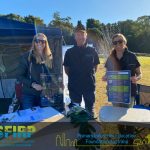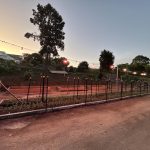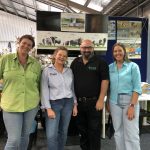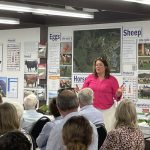Integrating Food and Fibre Education Across Subject Areas: A Sustainable Approach to Learning.
Today’s classrooms are dynamic environments where students are cultivating skills for their future. At PIEFA, we know that if our mission to enhance young Australians’ knowledge and understanding of primary industries is to be achieved, food and fibre programs and resources must be accessible to diverse classrooms and learning areas beyond ‘agriculture’ as a subject area.
The education programs and resources that PIEFA develop include a blend of creative and engaging formats, designed to foster curiosity, skill development and food and fibre knowledge across various learning and learning areas, whilst providing opportunities for the development and application of STEM skills.
Learning about the life cycles of cattle, sheep, goats, wheat plants and alpacas doesn’t need to sit exclusively in the ag classroom, rather, lesson plans can extend into Science, Mathematics, Design & Technologies, Humanities & Social Science and English – to name a few.
PIEFA’s diversified approach to producing resources that are accessible and practical for teachers across many subject areas in primary and secondary schools, allows students to gain a more comprehensive understanding of our primary industries and the range of roles, responsibilities and careers in the sector, whilst addressing key curriculum areas.
For instance, The Life of an Alpaca, which has been developed by PIEFA, in collaboration with the Australian Alpaca Association and AgriFutures Australia, is a resource targeted to Year 3 and 4 students, focusing on the cross-curricula learning areas of Science, Design and Technologies, Mathematics and Humanities and Social Sciences. Students engage with tasks that utilise skills in different learning areas, promoting an understanding that learning about food and fibre requires a wide skillset. There’s a literacy task, where students learn about the history of the introduction of alpacas into Australia (using technology to map distances), which progresses to a science concept of creating a life cycle diagram of an alpaca and, finally, students practise their mathematical skills by using data to build a life-sized model of an alpaca to track its rate of growth.
The Sexual and Asexual Reproduction in Plants resource has been created by PIEFA in collaboration with industry partner, Hort Innovation, and targets Year 9 to 10 students. This classroom resource focuses on the cross-curricula learning areas of Science and Design and Technologies and makes a clear and important connection between learning about the science of reproduction in plants to using and manipulating this process to produce food and fibre.
And these are just a couple of examples of how our highly skilled Education Officers [who are fully qualified and experienced teachers!] take current agriculture, food and fibre content that’s been gathered from industry experts, and translate this material into engaging classroom lesson plans that intentionally align with Australian Curriculum requirements. We are teachers committed to supporting teachers.
New resources are constantly being developed and we’re making it easy to identify relevant curriculum codes and subject areas, so teachers can determine which resources are best suited to their students.
There are a myriad of career pathways in Australia’s primary industries, but they’re often thought of as exclusively farming jobs. With roles spanning from science and technology to communications, business management and so much more, our cross-curricular approach to food and fibre education helps to highlight the enormous range of career possibilities.
With the ultimate goal of engaging students to better understand the agriculture, food and fibre industries, it’s so important to pique interest in the early years within learning environments. We’re excited to help Aussie teachers grow our future leaders through an integrated learning approach!-






